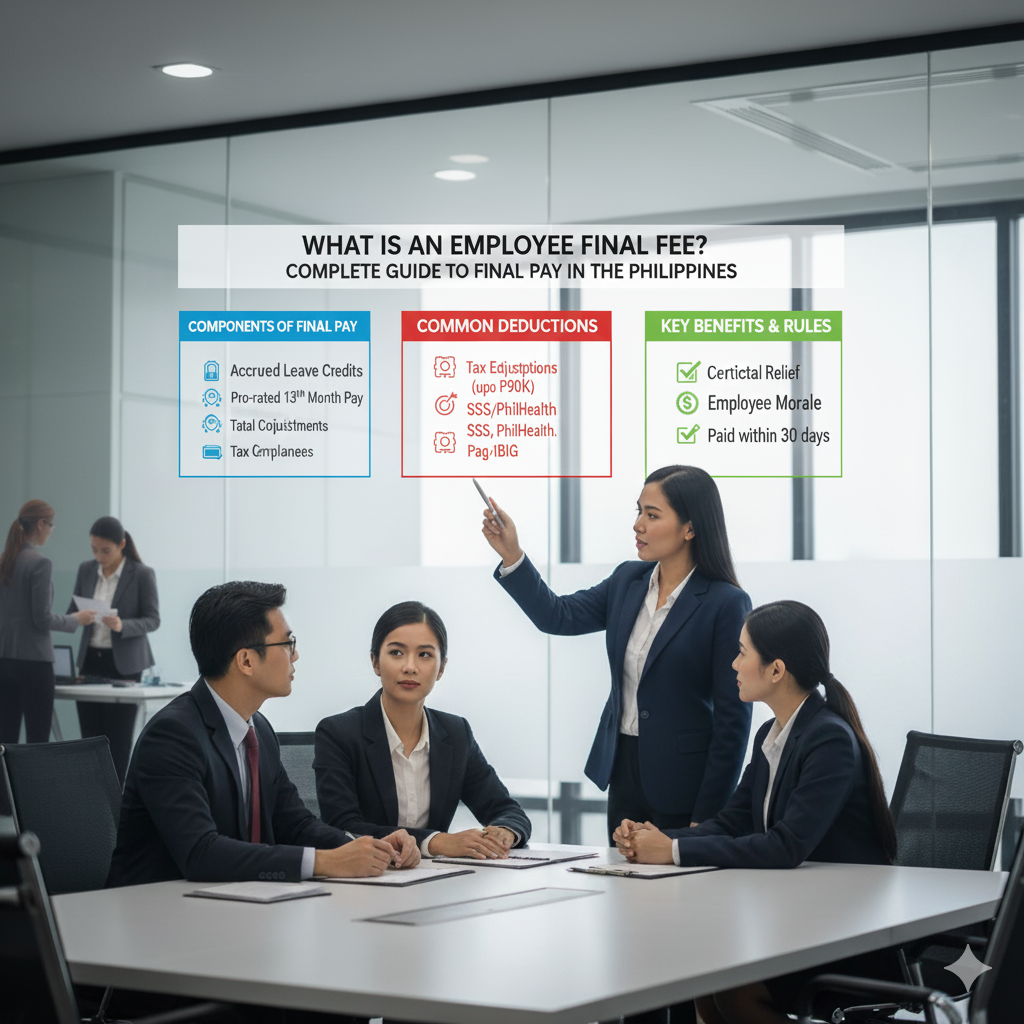When an employee resigns, retires, or is terminated, one of the most important questions they ask is: “How much is my final pay?” In the Philippines, this is commonly referred to as the Employee Final Fee or Final Pay.
Understanding the rules, inclusions, and timelines of final pay is essential for both employees and employers to avoid disputes and ensure compliance with labor laws.
In this guide, we’ll cover everything you need to know about the Employee Final Fee—from its definition to how it’s calculated, what’s included, and when it must be released.
What Is the Employee Final Fee?
The Employee Final Fee, also known as Final Pay, refers to the last compensation that an employee receives after leaving a company, regardless of the reason for separation.
It includes all the unpaid salaries, benefits, and entitlements that the employee has earned during their employment but has not yet received.
Legal Basis in the Philippines
The Department of Labor and Employment (DOLE) provides guidelines on the release of final pay through Labor Advisory No. 06, Series of 2020.
👉 According to DOLE, employers are required to release an employee’s final pay within 30 days from the employee’s last working day, unless a more favorable company policy, individual contract, or Collective Bargaining Agreement (CBA) exists.
What Is Included in the Employee Final Fee?
The final pay may vary depending on the employment agreement, but it generally includes:
- Unpaid Salary – Salary for days worked but not yet paid at the time of separation.
- Pro-Rated 13th Month Pay – Computed based on the months worked within the year.
- Cash Conversion of Unused Leaves – If the company policy allows monetization of unused vacation or sick leaves.
- Separation Pay (if applicable) – Required under the Labor Code for authorized causes of termination (e.g., redundancy, retrenchment).
- Other Benefits or Deductions – Incentives, allowances, or deductions for company property not returned, loans, or outstanding obligations.
Computation Example of Final Pay
👉 Example:
An employee resigns effective September 15, 2023. Here’s the breakdown of their final pay:
Unpaid Salary (Sept 1–15): ₱15,000
Pro-Rated 13th Month Pay (9 months): ₱22,500
Unused Vacation Leave (5 days × ₱1,000): ₱5,000
Less: Loan Balance: ₱2,000
Total Final Pay = ₱40,500
When Should the Employee Final Fee Be Released?
- Standard Rule: Within 30 days from the last working day.
- Earlier Release: Some companies release final pay earlier (e.g., within 15 days), depending on policy.
- Delays: May happen if there are clearance procedures or pending accountabilities, but should not exceed 30 days unless justified.
Why the Employee Final Fee Matters
Why the Employee Final Fee Matters
- Ensures rightful compensation for work rendered
- Provides financial support during transition
- Promotes fairness and legal compliance
For Employers
- Strengthens employee relations
- Avoids labor disputes and DOLE complaints
- Demonstrates compliance with labor laws
Common Issues With Final Pay
- Delays in Release – Usually caused by clearance or unreturned company property.
- Incomplete Payment – Exclusion of leave conversions or benefits.
- Disputes on Separation Pay – Especially in cases of termination.
👉 If disputes arise, employees may file a complaint with DOLE to enforce their rights.
Conclusion
The Employee Final Fee or Final Pay is a critical part of the employment lifecycle in the Philippines. Both employees and employers must understand what’s included, how it’s computed, and when it should be released to ensure fairness and compliance.
By following DOLE guidelines and maintaining transparent payroll processes, businesses can avoid disputes and employees can transition smoothly with the compensation they rightfully deserve.

